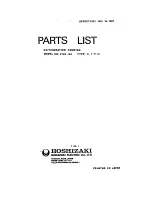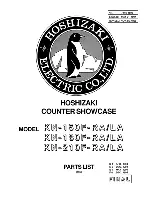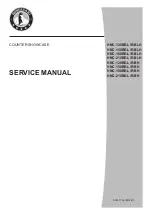
- 10 -
Remote Refrigeration Operation
The remote models are designed to use R449 refrigerant and shipped from the factory with the evaporator
coil, expansion valve, drier filter, sight glass and refrigerant solenoid valve. A thermostat senses evaporator
temperature and opens and closes the refrigerant solenoid valve. The solenoid valve closes and shuts off the
refrigeration flow to the unit and initiates a pump down cycle. This will allow the remote low-pressure
switch to open and shut off remote compressor. The temperature control may require some adjustment by
installer for proper operation of unit. This unit also has a defrost timer that will shut the refrigeration
solenoid off a set number of times per day (set at factory for 3 times per day) to insure a full defrost occurs.
The solenoid will remain off until the either the off time is reached or until the temperature sensor on the
coil reaches a set temperature, whichever happens first.
The condensing unit is optionally supplied from the factory for remote location installation. The
condensing unit supplied from the factory will include a high/low pressure switch that must be mounted
and wired by the installer. The high/low pressure switch must be wired in series with the compressor power
supply as shown in diagram below. If the factory is not providing the condensing unit a high/low pressure
switch will need to be supplied by installer and installed by installer.
Remote Refrigeration Instructions
1.
Mount condensing unit indoors as close to the remote display case as practical. The refrigeration line
should be as short as possible.
2.
All refrigeration and/or electrical materials between the condensing unit and display case are to be
supplied by installing contractor.
3.
Route properly sized and designed refrigeration lines from the condensing unit to the cabinet.
Horizontal suction lines should be pitched downward towards the condensing unit at least ½” per 10’
run to aid the oil drainage. A “P” trap must be installed in the suction line at the foot of every riser to
insure oil return. Dry nitrogen must be used to flow through tubing while brazing refrigeration lines.
4.
Suction line must be insulated the entire length with Armaflex (or equivalent). Do not run liquid line
inside insulation with suction line.
5.
The remote high/low-pressure control must be mounted, wired and set pressures by the installer.
6.
Leak check condensing unit, cabinet, and all connecting tubing. Cabinet and condensing unit tubing
should be checked to insure no leaks occurred during shipping or from rough handling.
Make certain all refrigeration valves are opened and evacuate system to 500 microns. Charge the
system with refrigerant type specified on the data plates.
REMOTE
HIGH LOW
PRESSURE
CONTROL
LIQUID LINE
SUCTION LINE (INSULATED)
REMOTE
CONDENSING
UNIT
EVAPORATOR COIL
DISPLAY CASE
EXPANSION
VALVE
HIGH
LOW
LIQUID LINE
SOLENOID VALVE
SIGHT GLASS
DRIER/FILTER
FIELD CONNECTION
HOT
FUSED
POWER
SUPPLY
DEFROST
TIMER
HOT
DEFROST
TERMINATE
TEMPERATURE
CONTROL
NEUT.
TEMP. CONTROL PROBE
All manuals and user guides at all-guides.com
































